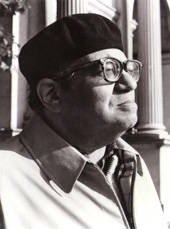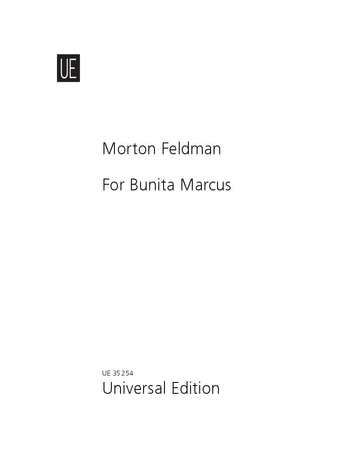

Morton Feldman
For Bunita Marcus
Duration: 75'
Instrumentation details:
piano
Feldman - For Bunita Marcus for piano
Audio preview
Work introduction
For
Bunita Marcus
was untypical of my music, but I’ll tell you exactly how I wrote it, formally
speaking. Not the notes; the notes didn’t write the piece. I have a talent for
notes, the way some people have a talent for catching fish or for making money.
I have no problems with notes. I just pull them back out of my ear – no problem
at all.
For me, rhythm doesn’t exist. I
would rather use the term “rhythmicize.” I started to get interested in metre;
for me, at the moment when you use it, it implies the question, “How do I get
beyond the bar-lines?” I wrote down 4/4, left a little space, drew a bar-line
and then I wrote over that bar-line. “The black hole of metre,” because some
people shouldn’t come too close to the bar-line – there is a lot of music where
the style tends to pull it across the bar-line.
For
Bunita Marcus
mainly consists of 3/8, 5/16 and 2/2 bars. Sometimes the 2/2 had musical importance,
like at the end of the piece. Sometimes the 2/2 acts as quiet, either on the
right or the left or in the middle of a 3/8 or a 5/16 bar, and I used the metre
as a construction – not the rhythm – the metre and the time, the duration which
something needs.
What finally interested me were
the “development sections,” where I was using mixed-metre. It went 2/2, 3/4,
5/8 … so I used metre up to a certain point as a period of instability. I
didn’t consider it a development section where I – I can’t find a better
expression – developed the metre. Then, like every other composer, I thought,
how much change is possible in this grid? And I said; accelerate it or slow it
down. But I couldn’t make a definitive plan – that wouldn’t work. It can only
work if you go along with the material and see how it is turning out.
Morton Feldman


